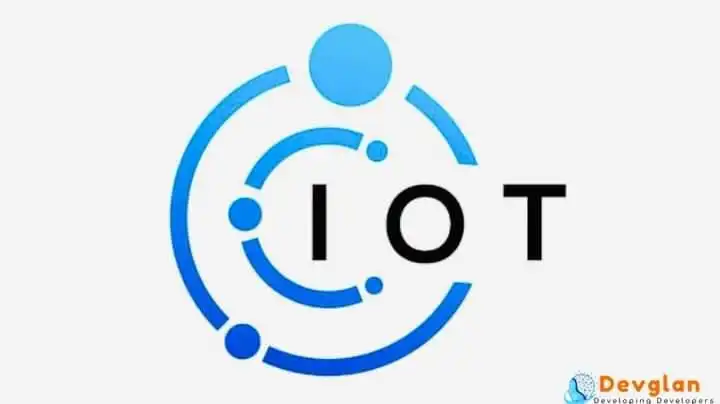The Internet of Things (IoT) refers to the network of physical objects-devices, vehicles, appliances, and more-embedded with sensors, software, and other technologies that enable them to connect and exchange data with other devices and systems over the internet. Here's a comprehensive overview of how IoT works:
Key Components of IoT
- Sensors and Devices:
- Sensors: Collect data from the environment, such as temperature, humidity, light, motion, and more. Examples include temperature sensors, accelerometers, and cameras.
- Actuators: Perform actions based on data received, such as opening a valve, turning on a light, or adjusting a thermostat.
- Connectivity:
- IoT devices communicate through various networks and protocols, such as Wi-Fi, Bluetooth, Zigbee, cellular (3G/4G/5G), and LPWAN (Low Power Wide Area Networks) like LoRa and NB-IoT.
- Data is transmitted from sensors to a central system, often referred to as a gateway or hub, which can then relay the data to cloud servers for further processing.
- Data Processing:
- Edge Computing: Processing data closer to where it is generated (at the edge of the network) to reduce latency and bandwidth usage.
- Cloud Computing: Centralized processing of large amounts of data, offering scalable storage and powerful analytics capabilities.
- Data Storage:
- Data collected by IoT devices is stored in databases, which can be either on the cloud or on-premises. These databases handle vast amounts of real-time data, often using technologies designed for big data, such as NoSQL databases.
- Data Analytics:
- Advanced analytics techniques, including machine learning and artificial intelligence, are applied to the data to extract meaningful insights, detect patterns, predict trends, and drive automated actions.
- User Interface:
- IoT systems often include dashboards, mobile apps, or web interfaces that allow users to interact with the system, monitor data in real-time, and control devices remotely.
How IoT Works: Step-by-Step
- Data Collection:
- Sensors embedded in devices collect data from their environment. For example, a smart thermostat collects temperature and humidity levels.
- Data Transmission:
- The collected data is transmitted to an IoT gateway or hub using local connectivity options. For instance, a smart home device might use Wi-Fi to send data to a home automation hub.
- Data Preprocessing:
- The IoT gateway may perform initial processing on the data to filter out noise, aggregate information, or convert it into a different format. This is often part of edge computing.
- Data Transfer to Cloud:
- The preprocessed data is sent from the gateway to cloud servers over the internet. This can involve protocols like MQTT (Message Queuing Telemetry Transport) or HTTP.
- Cloud Processing and Storage:
- Once in the cloud, the data is stored in databases and further processed using advanced analytics tools. Machine learning models might analyze the data to provide predictive maintenance alerts or detect anomalies.
- User Interaction:
- End-users can access the processed data and insights through applications. For instance, a user can check the temperature readings from a smart thermostat via a smartphone app and adjust settings remotely.
- Action Execution:
- Based on the data analysis, actions can be automated. For example, if the temperature exceeds a certain threshold, the system might automatically trigger the air conditioning.
Practical Examples of IoT
- Smart Homes:
- Devices like smart lights, thermostats, cameras, and door locks can be controlled remotely and can interact with each other to create a cohesive home automation system.
- Wearables:
- Fitness trackers and smartwatches collect data on physical activity, heart rate, and sleep patterns, providing users with health insights.
- Industrial IoT (IIoT):
- Factories use sensors to monitor machinery, detect faults, and predict maintenance needs, improving efficiency and reducing downtime.
- Smart Cities:
- Urban areas deploy IoT devices for traffic management, waste management, environmental monitoring, and enhancing public safety.
- Healthcare:
- Medical devices collect and transmit patient data to healthcare providers for real-time monitoring and remote diagnostics.
IoT Protocols and Standards
- MQTT: Lightweight messaging protocol for small sensors and mobile devices.
- CoAP (Constrained Application Protocol): Designed for use with constrained devices and networks.
- HTTP/HTTPS: Standard web protocols used for transmitting data.
- LoRaWAN: Protocol for low-power, long-range communication.
- Zigbee/Z-Wave: Protocols for low-power wireless communication in home automation.
Security and Privacy
- Data Encryption: Ensuring data transmitted between devices and servers is encrypted to prevent unauthorized access.
- Authentication: Verifying the identity of devices and users to prevent unauthorized access.
- Update Management: Regularly updating device firmware and software to protect against vulnerabilities.
- Privacy Policies: Implementing robust policies to protect user data and comply with regulations like GDPR.
Challenges
- Interoperability: Ensuring different IoT devices and systems can work together seamlessly.
- Scalability: Managing the growing number of connected devices and the vast amounts of data they generate.
- Security: Protecting IoT systems from cyber threats and ensuring data privacy.
Future Trends
- AI and Machine Learning: Increased integration of AI for more sophisticated data analysis and automation.
- 5G Connectivity: Enhancing IoT capabilities with faster and more reliable wireless communication.
- Edge Computing: Greater emphasis on processing data locally to reduce latency and bandwidth usage.
- Blockchain: Using blockchain for secure and transparent data transactions in IoT networks.
By connecting the physical and digital worlds, IoT is transforming industries, enhancing efficiency, and creating new opportunities for innovation.


















